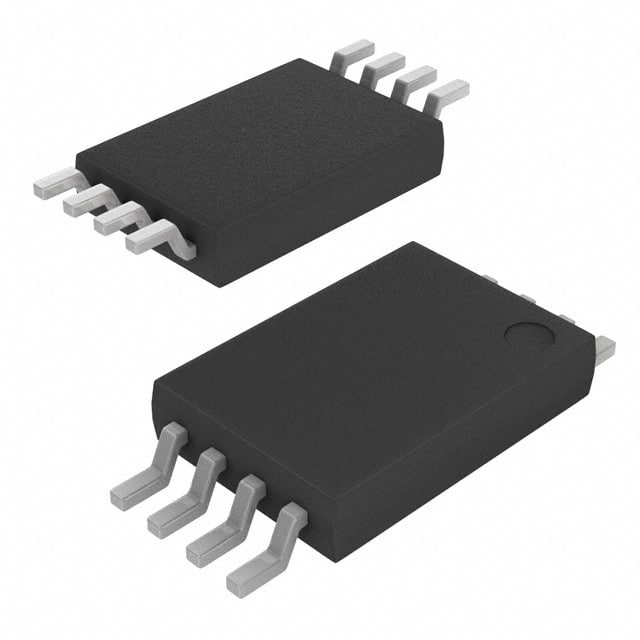Xem thông số kỹ thuật để biết chi tiết sản phẩm.

Encyclopedia Entry: 93LC46AT-I/ST
Product Overview
Category
The 93LC46AT-I/ST belongs to the category of electrically erasable programmable read-only memory (EEPROM) chips.
Use
This product is primarily used for non-volatile data storage in various electronic devices, such as microcontrollers, computers, and consumer electronics.
Characteristics
- Non-volatile: The 93LC46AT-I/ST retains stored data even when power is removed.
- Electrically erasable: The chip allows for easy modification and erasure of stored data.
- Programmable: Users can write and rewrite data to the chip multiple times.
- Small form factor: The chip is compact and suitable for integration into space-constrained devices.
Package and Quantity
The 93LC46AT-I/ST is available in a small outline transistor (SOT-23) package. It is typically sold in reels containing a quantity of 3,000 units.
Specifications
- Memory capacity: 1 kilobit (128 bytes)
- Supply voltage: 2.5V to 5.5V
- Operating temperature range: -40°C to +85°C
- Data retention: Up to 200 years
- Write endurance: 1 million write cycles
Pin Configuration
The 93LC46AT-I/ST features an 8-pin configuration with the following pin assignments:
- Chip Select (/CS)
- Serial Clock (CLK)
- Serial Data Input (DI)
- Serial Data Output (DO)
- Write Enable (W)
- VSS (Ground)
- NC (No Connection)
- VCC (Power Supply)
Functional Features
- High-speed serial interface for efficient data transfer.
- Byte-level random access allows for selective reading and writing of data.
- Self-timed programming cycle ensures reliable and accurate data storage.
- Hardware write protection prevents accidental modification of stored data.
Advantages and Disadvantages
Advantages
- Compact size enables integration into space-constrained devices.
- Non-volatile memory ensures data retention even during power loss.
- Electrically erasable and programmable nature allows for easy data modification.
- High endurance and long data retention period make it suitable for various applications.
Disadvantages
- Limited memory capacity compared to other EEPROM chips.
- Relatively higher cost per kilobit of storage compared to alternative memory technologies.
Working Principles
The 93LC46AT-I/ST utilizes a floating-gate transistor structure to store and retrieve data. When writing data, an electric charge is applied to the floating gate, altering its electrical characteristics. This change in charge determines the stored data value. During read operations, the charge on the floating gate is measured, allowing the retrieval of the stored data.
Application Field Plans
The 93LC46AT-I/ST finds application in various fields, including: 1. Microcontroller-based systems requiring non-volatile memory storage. 2. Computer motherboards for storing system configuration data. 3. Consumer electronics like smart TVs, set-top boxes, and gaming consoles for firmware storage. 4. Automotive electronics for storing critical data such as calibration settings and vehicle parameters.
Alternative Models
Several alternative models with similar functionality to the 93LC46AT-I/ST include: - 93LC46B-I/SN - 93LC46C-I/P - 93LC46D-I/SN
These models offer different package options, pin configurations, or extended temperature ranges while maintaining compatibility with the 93LC46AT-I/ST.
In conclusion, the 93LC46AT-I/ST is a compact and versatile EEPROM chip used for non-volatile data storage in various electronic devices. Its electrically erasable and programmable nature, along with high endurance and long data retention, make it suitable for a wide range of applications.
Word count: 510
Liệt kê 10 câu hỏi và câu trả lời thường gặp liên quan đến ứng dụng 93LC46AT-I/ST trong giải pháp kỹ thuật
What is the 93LC46AT-I/ST?
- The 93LC46AT-I/ST is a 1K-bit Microwire-compatible serial EEPROM with a wide operating voltage range.
What are the typical applications of the 93LC46AT-I/ST?
- It is commonly used in various technical solutions such as automotive, industrial, and consumer electronics for data storage and configuration purposes.
What is the operating voltage range of the 93LC46AT-I/ST?
- The 93LC46AT-I/ST has an operating voltage range of 2.5V to 5.5V.
What is the maximum clock frequency supported by the 93LC46AT-I/ST?
- The 93LC46AT-I/ST supports a maximum clock frequency of 2MHz.
Can the 93LC46AT-I/ST be used in automotive applications?
- Yes, the 93LC46AT-I/ST is suitable for automotive applications due to its robustness and reliability.
Does the 93LC46AT-I/ST support write protection?
- Yes, the 93LC46AT-I/ST features a write-protect pin for added security.
What is the temperature range for operation of the 93LC46AT-I/ST?
- The 93LC46AT-I/ST has an extended temperature range of -40°C to 125°C, making it suitable for harsh environments.
Is the 93LC46AT-I/ST RoHS compliant?
- Yes, the 93LC46AT-I/ST is RoHS compliant, ensuring environmental friendliness.
Can the 93LC46AT-I/ST be used in battery-powered devices?
- Absolutely, the low power consumption of the 93LC46AT-I/ST makes it ideal for battery-powered devices.
Are there any known compatibility issues with the 93LC46AT-I/ST?
- The 93LC46AT-I/ST is widely compatible with various microcontrollers and interface protocols, minimizing compatibility concerns.

